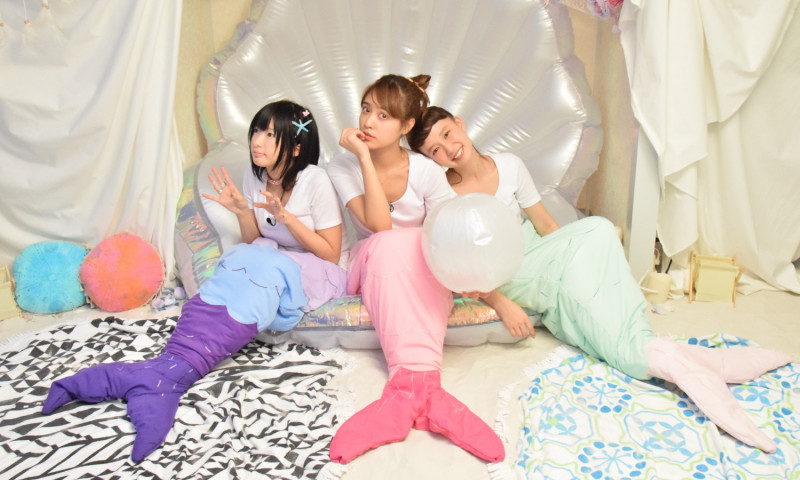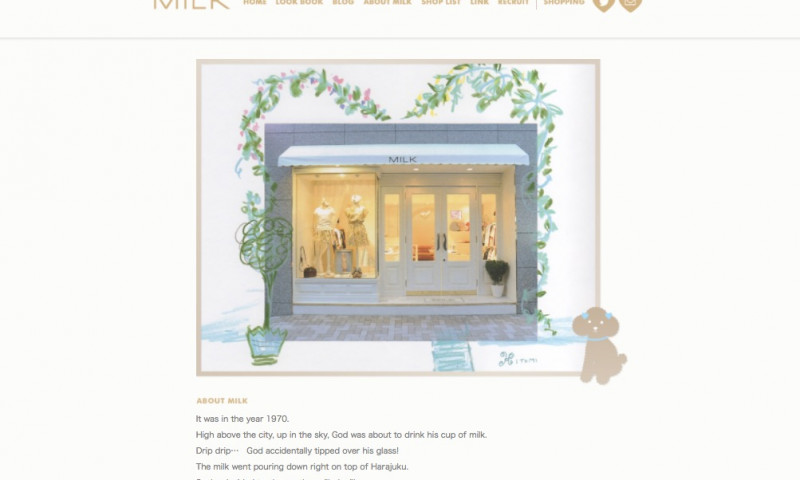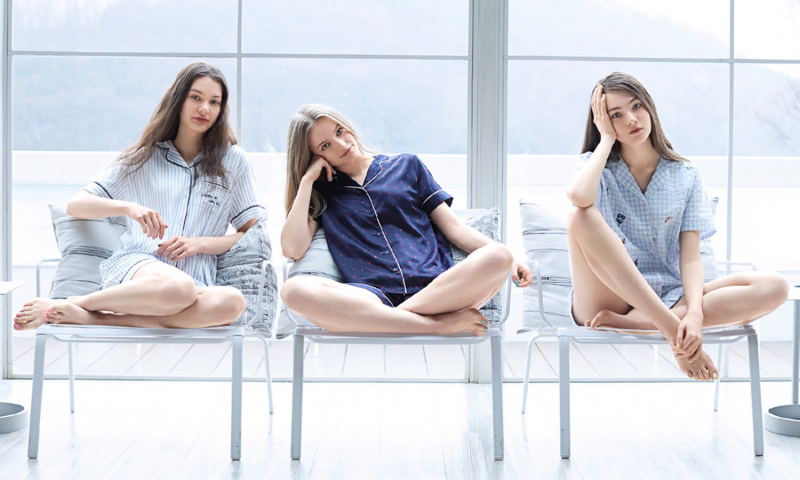
For Comfort on a Budget; GU’s PJs Are Popular Among Japanese Girls
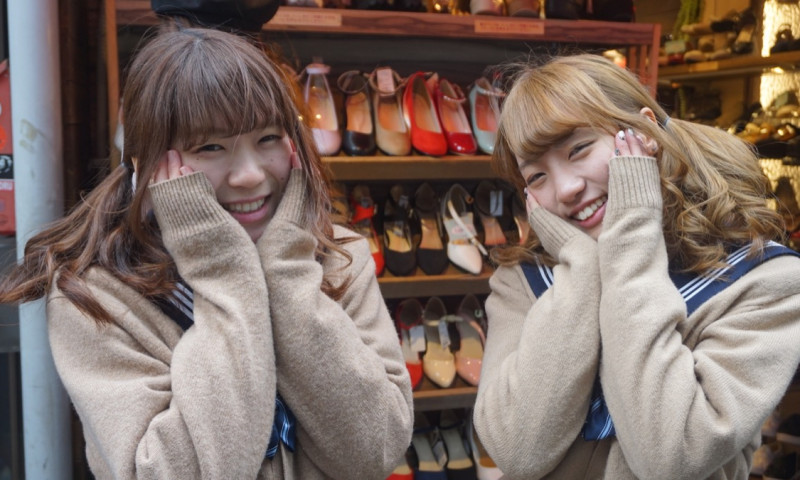
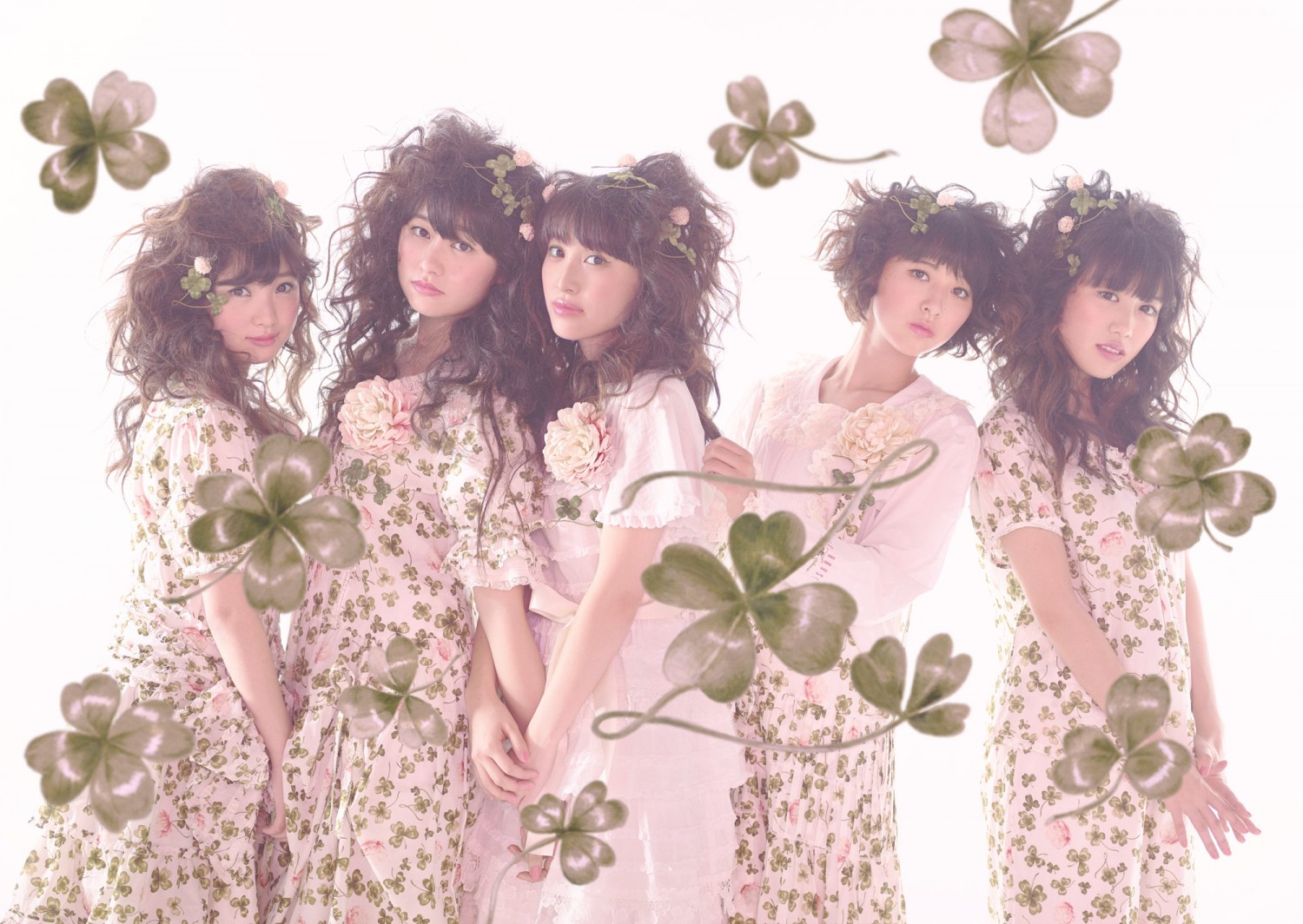
Sponsored Links
“Kawaii culture” exploded from the consumerist society of the 1970s. From there an increasing number of people began to consume the word “cute” in of itself, which specifically led to the commercialized “fancy goods” market epidemic. In short, the adjective “kawaii” in Japanese started having a symbolic value. Eventually from this, the character representative of all things cute, Hello Kitty, was created by Sanrio, and the company went on to produce one miracle after another. Cuteness became a character, and then a commodity. This all happened as part of the first order of the “Kawaii Revolution” of consumerist society, which is where we left off during our last installment.
消費社会が「かわいいカルチャー」を爆発的に生み出した70年代。そこでは、「かわいい」という言葉そのものを消費する人々が増え始め、そこで育まれた感受性を具体的に商品化したファンシーグッズなどが流行した。単なる形容詞だった「かわいい」という日本語が、記号的な価値をもつようになったのだ。そして、やがて「かわいい」キャラクターの代名詞というべきハローキティを誕生させるサンリオが奇跡を次々と起こす。「かわいい」がキャラクターになる。商品になる。これらは全て消費社会に起きた、いわば、第一次「かわいい革命」である。と、ここまでが前回の要諦だ。
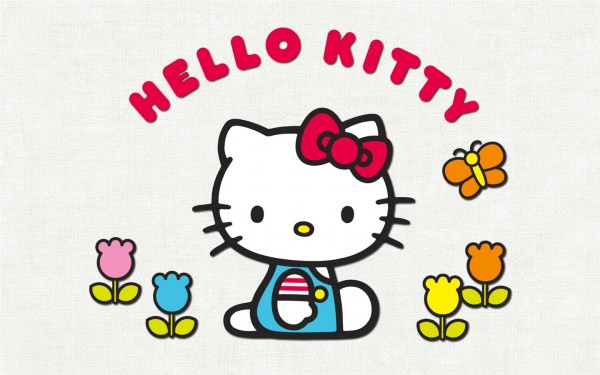
Read the past articles
vol.1 : Finding Where “Cuteness” Currently Lies
vol.2 : What is the Exact Origin of “Kawaii”?
vol.3 : Kawaii Culture Didn’t Exist at the Beginning of the Modern Age?!
vol.4 : Consumerist Society and the Birth of “Kawaii” Culture
The media at the time, especially magazines targeting young women, sharply captured this transformation of the word “kawaii”. While this was happening, the Japanese language updated the meaning of word “kawaii” from its natural use to the way it was being used in women-oriented media. In this volume, we’d like to take a closer look at how the word “kawaii” was re-born among consumerist society, and the women’s magazine content that tied in with it.
さて、そんな「かわいい」という言葉の変容を当時のメディア、特に若い女性をターゲットにした雑誌は、するどく捉えていた。同時に、女性メディアが「かわいい」を、それまでのありかたからアップデートする母体ともなった。今回は、消費社会のなかで生まれ直した「かわいい」という言葉が、こうした女性雑誌のコンテンツとどのように結びついたかを見てみよう。
The word “kawaii”, before it became a widely used term like it is now, was a word used by men toward women. One of phrase you would hear, for example, was “Kawaiko-chan” (a phrase used to describe cute women). Although it’s an outdated phrase now, during the 60s it was commonly used to compliment a woman. So, because women wanted men to call them “Kawaiko-chan”, they would dress in order to impress men. In other words, the word “kawaii” was none other than a word that existed to govern women.
「かわいい」という言葉は、それが世間で普通に使われるようになった近代という時代以来、男性が女性に向かって放つ言葉だった。例えば、「かわい子ちゃん」という言葉がある。今となっては、ダサさの極みでしかないこの言葉も、60年代くらいまでは、男性が女性を誉めそやすフレーズとして普通に使われていた。そして、女性も男性に「かわい子ちゃん」と呼ばれたくて、彼らの関心を集める服装をしていたのだ。ようするに、そこでは「かわいい」という言葉は、男性が女性を支配するための原理のなかで作動する言葉以外のなにものでもなかったのである。
However, around the mid-70s, the meaning of the word began to change. To quote Eiji Otsuka, who we’ve referred to a number of times during this series: “The new usage of the word “kawaii”, from the moment it was voiced by the mouths of women, encompassed all of the ways it had been used before then. So the word “kawaii”, which had been used to oppress women, was in turn transformed by women into one that would dominate female circles. To summarize, although it had mainly been used by men within the power dichotomy between men and women, it began to be used as a term by women to describe their own personal outlook and its creation. This was most easily felt in women’s media, which played a role in facilitating this transformation.
しかし、70年代中頃になると、その言葉の意味が変わってくる。この連載で何度も出てきている批評家の大塚英志の言葉を引くと、「新たな『かわいい』の語法は女性たちの口から発せられた瞬間逆に眼前のあらゆる事象をこの『かわいい』の一言で包括してしまうものとして現れる。女性を支配することばとしてあった『かわいい』が、逆に女性たちが彼女たちをとりまく世界を『かわいい』の一言で支配し直してしまうことばへと変容していったのである。」つまり、男女間の支配関係で用いられていた、主に男性側からの言葉だった「かわいい」が、女性が自分たちの世界観を表現し、作るための言葉として使われるようになったのだ。そして、その変化に一番敏感であり、変化を助長する役目を担ったのが女性メディアなのだ。
Starting in the 70s, one after another young women’s magazines were being launched. an・an, which began in March of 1970, JJ which began in May of 1975 as a special women’s book, and then Olive and ViVi in the 1980s were just some of the magazines that shook up bookstore shelves. Besides Olive, these are still popular women’s magazines today. The “Kawaii Revolution” theme from before served as the background and reason behind the rise of women’s media like this.
70年代以降、若い女性向けの雑誌が次々と創刊されていった。1970年3月には「an・an」が、1975年5月には「JJ」が「別冊 女性自身」として、さらに1980年代に入ると「オリーブ」や「ViVi」が、それぞれ本屋の棚を賑わすようになっていった。「オリーブ」以外はいまでも続く日本の女性誌の代表的な雑誌だ。こうした女性向けメディアの勃興と流行の背景にあったものこそ、前回からのテーマである第一次「かわいい」革命なのだ。

an・an
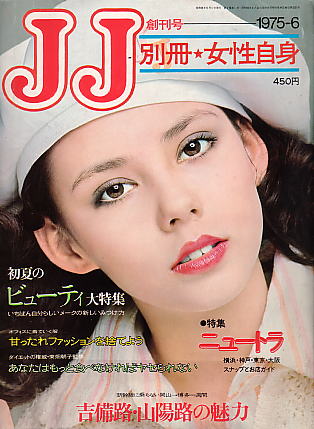
JJ
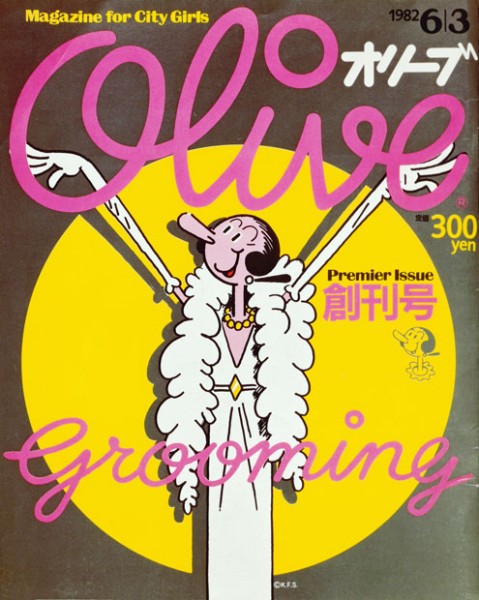
Olive
That is to say, unlike now there weren’t so many designs emphasizing the word “kawaii” in magazines back then. Even compared to the current obsession of using the word “kawaii” on magazine covers, its usage was much more infrequent, and even when it appeared, it would only grace the corners. However as an idea, it filled the pages of magazine content.
とはいっても、いまとは違って雑誌自体はそんなに「かわいい」という言葉を強調したデザインとはなっていない。「かわいい」という文字が強迫観念のように表紙に出てくる現代と比べても、その使用頻度は少ないし、あったとしても表紙の隅を飾る程度だ。しかし、それは思想のようなものとして、雑誌のコンテンツに込められていたのだ。
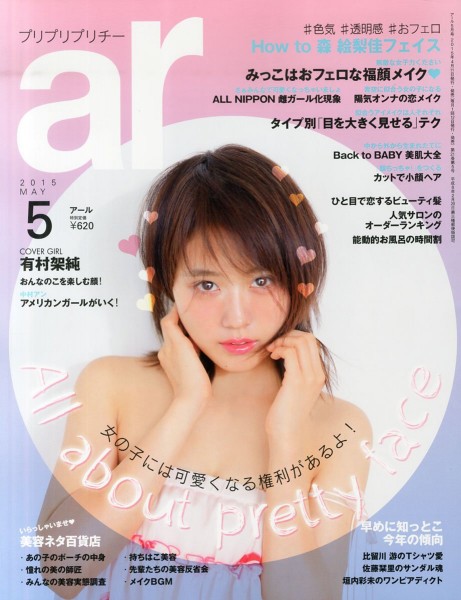
The word “kawaii” is abused on females magazine covers recently
For instance, there was a fashion brand that took the world by storm in the 70s called Pink House. This brand of clothes was often worn by Yuri Tachikawa (wife of Isao Kaneko), who appeared on the cover of an・an multiple times and it became well-known from there. The fashion of clothing designer Isao Kaneko and model Yuri Tachikawa, full of girl’s dreams and longings, graced the covers of early issues of an・an. An illustrator acquainted with Kaneko, named Setsu Nagasawa (another very influential person), recalled that Kaneko would look at the photographic negatives of the an・an cover while repeating “kawaii” over and over again.
例えば、「ピンクハウス」という70年代に一世を風靡したファッションブランドがある。このブランドの洋服をまとった立川ユリ(金子の妻)が「an・an」の表紙に何度も登場していたことはよく知られている。衣装製作・金子功、モデル・立川ユリの組み合わせで、女の子の夢や憧れが全て集まったようなファッションが表紙を飾っていたのが初期の「an・an」なのである。金子と親しかったイラストレーターの長沢節(彼もまた一世を風靡した人物だ)は、「an・an」の表紙の写真のネガを見ながら金子がしきりに、「可愛い」を連発していたことに触れて、次のように当時を振り返っている。
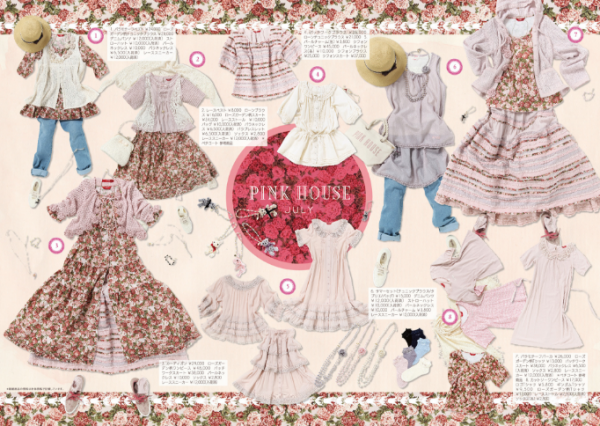
Pink House still keeps having kawaii style since the beginning (the picture is screen cap of 2015 A/W collection from the website)
“That string of “kawaii” he spoke is how I remember him.” From the time an・an launched he would repeat the phrase over and over (abbreviated), and I realized that his Japanese and mine were very different… I first learned that from him. (taken from Setsu Nagasawa’s Fushigi na Dansei (A Strange Guy), a book about Isao Kaneko from Pink House)
「あの『可愛い』のハシリは私にとって金子君だった。アンアン創刊当時からしきりに『可愛い』を連発して(中略)この日本人の日本語は私が知っている日本語とは大ぶ違うんだな……というのをそこで初めて教えられた」(長沢節「不思議な男性」『金子功のピンクハウス絵本』より)
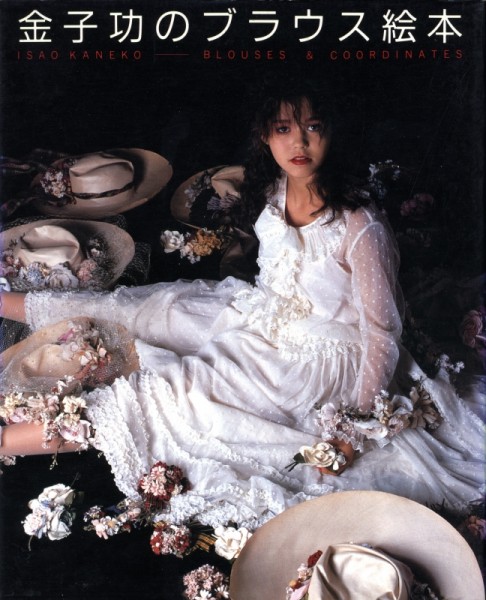
Kaneko Isao’s book about blouses
Kaneko’s repetition upon looking at the cover of an・an was something new, and became an important factor when creating an・an. Eiji Otsuka also touched on his memories of Nagasawa, stated: “(Isao Kaneko) had no qualms about sharing the re-configured meaning of the word “kawaii”, which re-affirmed the world of women by women.” It was precisely because this that his brand Pink House of the 70s and 80s was consistent and a leader of the ideology of “kawaii culture”.”
金子が「an・an」の表紙を見て言い放つ「可愛い」は、新しい。そして、それは「an・an」を作る大事な要素となっていた。大塚英志はこの長沢節の回想録に触れて、「(金子功は)女性たちが彼女たちの『世界』を肯定し再構成していく語としての『かわいい』をためらいもなく共有している。共有していたからこそ彼のブランドである『ピンクハウス』は70年代から80年代を一貫して『かわいいカルチャー』を『思想的』にリードしたのだ」と述べている。
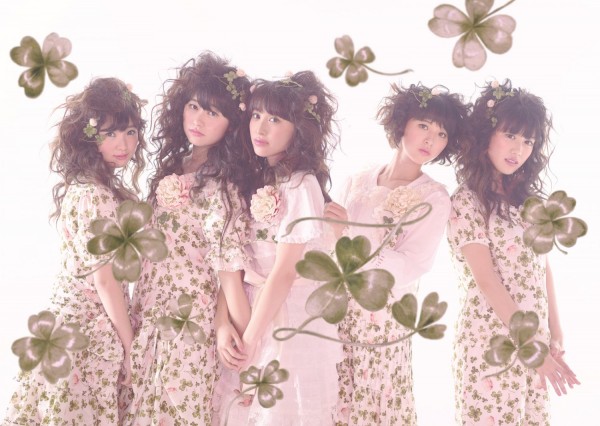
Last year, Pink House collaborated with Momoiro Clover Z
During the first revolution of “kawaii” during the 70s, it became a word by women for women. Then this new “kawaii” was incorporated aggressively as soon as an・an launched. For example, if you look at the contents of the October 1972 issue of an・an, you’ll notice a feature called “It’s cute to wear the (Hanshin) Tigers baseball uniform”. This uniform was a men’s fashion item. If you think about it from the male perspective, it was likely that they weren’t open to women wearing the same thing, and would have better preferred women to look neater. However, when women chose to wear what they thought was fashionable, they weren’t doing it to receive flattery from men, but as self-expression to say, “What’s so bad about a woman wearing men’s clothing?!” in addition to re-affirming their own view of the world.
70年代、「かわいい」に第一次革命が起き、それは女性のための女性に対する肯定の言葉となった。そして、新しい「かわいい」を、創刊されたばかりの「an・an」は積極的に取り入れていった。例えば、1972年10月号の「an・an」の目次を見ると、「タイガースの野球服を着るとカワイイ」という特集があることに気づく。タイガースのユニフォームというのは男性のファッションだ。男性からしてみれば、自分と同じ服装なんかしないでほしい、もっと清楚な格好をしてほしい、と思うだろう。けれど、それを女性が自ら選んでオシャレとして着るとき、それは男に媚びるためでもなんでもなく、「女が男の服を着て何が悪い!」という自己表現を出すためであり、また、自分の世界観の肯定するためなのだ。
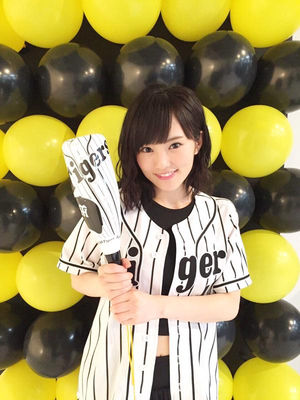
NMB48’s Sayaka Yamamoto is known as Hanshin Tigers fan, and wearing the costume without hesitating
The meaning of the word “kawaii” was transformed. It also transformed women’s media, and, also caused women themselves to evolve. an・an, which still continues today, was none other than a pioneer. Of course, an・an wasn’t the only one. For instance, Olive was a distinguished women’s magazine of the 80s, as well as an important media source. However, I think this is a good ending point for now. We can make that a talking point for next time.
「かわいい」の語法の変化。それは女性メディアを刷新し、またそのなかで自らも進化を遂げていった。今も続く「an・an」はまさにそのパイオニア的な存在だったわけだ。もちろん、「an・an」だけではない。例えば、80年代の少女雑誌の代名詞的存在だった「オリーブ」もまた、重要なメディアだ。しかし、今回はここで紙幅が尽きた。そのことは次回に話そう。
Sponsored Links
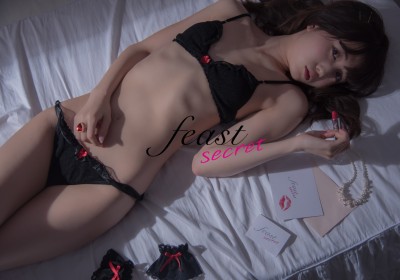
Would You Please Unhook My Lingerie…? Sexy Collection for Smaller Breasts Girls “feast secret” Launches!
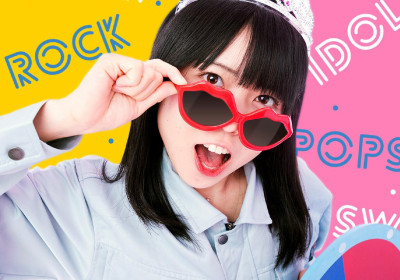
Risa Satosaki Reveals Everything in the MV for “S!NG”!


